Molly Pittman
Molly Pittman is a digital marketing expert and educator. She is the co-host of Perpetual Traffic, a digital marketing podcast that has been downloaded 3mm+ times. She has certified thousands of marketers in paid traffic and customer acquisition. She is the Co- Founder of DigitalStrategyBootCamps.com, which provides 1v1 coaching and consulting to help businesses grow through digital channels.
Ralph Burns
Ralph Burns is the CEO of Tier 11 (TierEleven.com), a digital advertising agency that specializes in helping businesses scale through Facebook advertising. Ralph’s agency manages a portfolio of Facebook advertising customer accounts in over 30 industries with annual spend in excess of $40 million.
Mike Rhodes
Mike is approaching veteran status in the AdWords world. He’s in his 13th year of building and running campaigns for businesses and brands all over the globe. He’s the co-author of the world’s best-selling book on AdWords, The Ultimate Guide to Google AdWords, now in its 5th edition.
Sue B. Zimmerman
Sue is an insightful social media educator, energetic speaker, and an in-demand business coach. Her blog is ranked as one of the top 10 social media blogs in 2017 by Social Media Examiner. She’s also one of the most popular CreativeLive instructors and Huffington Post named her among the Top 50 Must-Follow Women Entrepreneurs in 2017.
Tom Breeze
Tom Breeze is a YouTube Ads expert. He’s an entrepreneur, speaker, author and his YouTube ads agency, Viewability, boasts an impressive client list including Frank Kern, Neil Patel, Amy Porterfield, Brendan Burchard and many more. Tom will help you run YouTube ads properly so that you become the leader in your market.
We’ve got five traffic campaigns from five of the best digital marketers in the world: Molly Pittman, Tom Breeze, Ralph Burns, Sue Zimmerman, and Mike
Rhodes. From YouTube and Instagram to AdWords and Facebook Messenger & Ads, here are five quick strategies to boost your traffic.
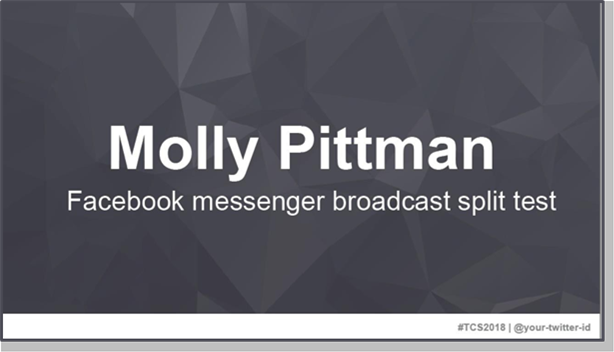
I have a Facebook Messenger broadcast split test to show you.
One of the most powerful aspects of Messenger is the ability to broadcast. It’s really similar to e-mail. You broadcast to your subscriber list.
There are different rules with Facebook Messenger that are different from e-mail, which I think will allow it to not be ruined by marketers, hopefully. There are restrictions about not sending anything promotional outside of a 24-hour window.
But, here’s what you can do:
- You can send content
- You can broadcast and ask questions
- You can broadcast anytime you want
You just can’t be directly promotional, so we’re kind of playing a game of re-engagement, which is really fun, right? You have to actually know your audience to be able to give the value that they’re interested in so that you can be promotional.
So, I wanna show you a test that we ran at ManyChat, and this was a subscription broadcast, so it wasn’t promotional. We tested two very different messages, and I want you to see how these results are different. It tells a cool story.
This was the first one we tested, which goes to a blog post:
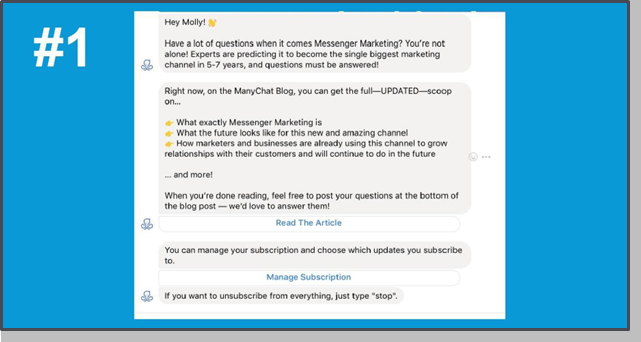
So here’s how this one works: It’s like one to many, it’s a bit longer, they’re clicking over to an article, we’re not asking them any questions, it’s not really engaging. It’s very much like email, it’s a one-to-many message.
Click through rates were lower on the ManyChat bot than what you would see in your business, because somehow we were featured as a bot, and got a bunch of spam subscribers.
Here’s the data from this message:

- It was sent to almost 190,000 people
- 144,000 opened it, which is still incredible even if a lot of those people were fake
- 84% open rate
- 3305 clicks
- Click-through-rate was 1.9% Then we tested this message:
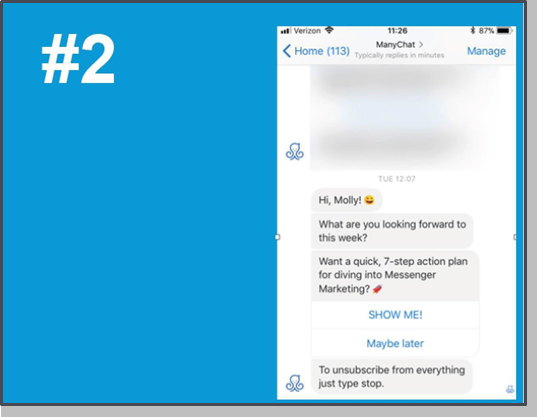
“Hi, Molly!” So we included the first name, very personal, there’s an emoji.
“What are you looking forward to this week? Want a quick seven-step action plan for diving into Messenger marketing?” Show me, or maybe later.
This is very, very different, right? This is conversational, we’re asking what they’re looking forward to that week, we’re calling them by their first name, we’re asking if they want this seven-step action plan.
Here’s the data from this message:

- The open rate was about the same – 80%.
- But our click-through rate went up to 5% and it is still going up.
- If you compare the two, the difference was between driving 3000 clicks and 10000 clicks, when we were more conversational, right?
- The click-through rate increased 2.5 when we were conversational versus treating the platform like email.
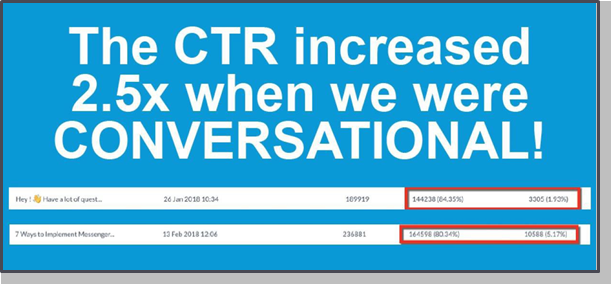
So the message is to always remember the medium when you’re delivering a message, right? It’s about understanding how people actually use that medium. What are they used to experiencing with their friends and family inside of Messenger, or inside of email? And really it’s understanding how different these platforms are.
You can’t just take your email strategy and plop it into Messenger. People are used to getting long emails through email, and people are used to having these short, little conversations where people ask questions and respond with short messages, right?
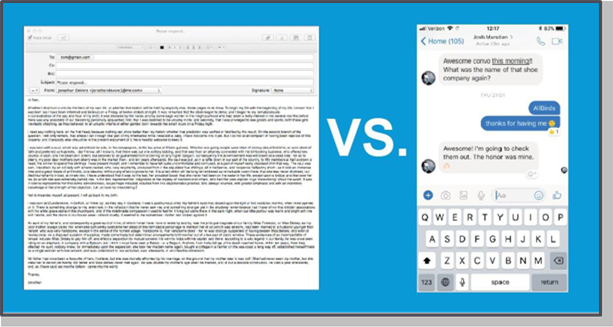
So, really, really simple, but just keep in mind, Messenger is instant, it’s short, it’s conversational, and if you write your ad-copy in that way, you’re going to get much higher click-through rates.
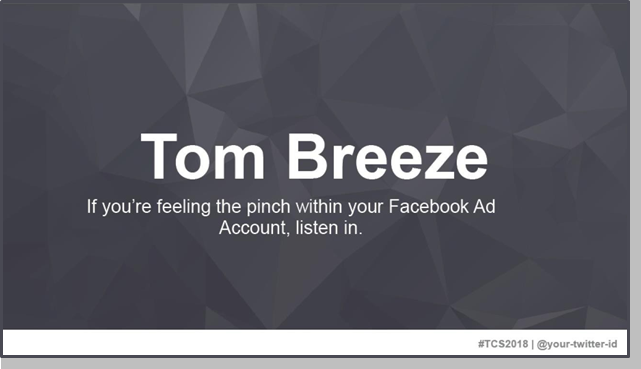
I’m going to show you how you can potentially take a really effective video campaign on Facebook, and get great results on YouTube as well. This is especially true right now, with a lot of the changes that happen on Facebook and things, and it’s a good time to try out and help diversify some of your ad- span.
So, the question is, then, how do you get in front of your customers in the right way and get in front of them in a way that’s going to be profitable for you and your company?
I’ve been working very closely with my Google reps this year to understand a lot more about how YouTube works in the deep level, so to speak, and some of the stuff that I’m gonna share with you has been working extremely well.
One thing that I found out is normal keyword research that a lot of people tend to do just doesn’t really work very well for YouTube. YouTube is still a search engine, but it’s a completely different type of search engine then pretty much everything else. That means you have to think differently when it comes to advertising on YouTube.
The key is that you need to find YouTube-friendly keywords, which are unique. It’s different than anything else that you’ve probably done before.
You can do this as a quick exercise at some point during the day. It’s a 20-minute brainstorm.
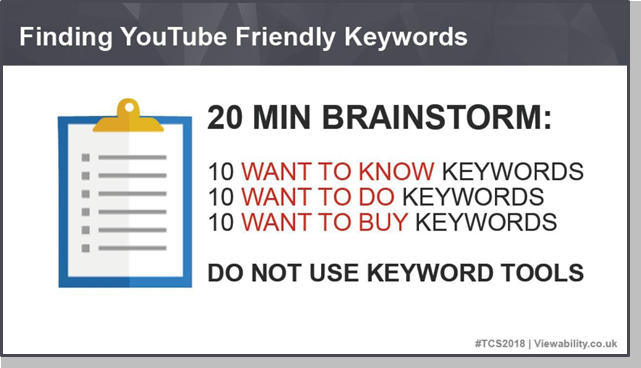
There are 3 different types of keywords your customers might be typing in when it comes to YouTube, because people go to YouTube for 4 different reasons, but 3 are search.
- Want To Know Keywords (advice, information)
- Want To Do Keywords (how-to type videos, or tutorial-type stuff)
- Want To Buy Keywords (when someone is getting really close to making a personal decision, they normally go for certain reviews about products, or type in a product names. Maybe some unboxing type videos, that sort of stuff)
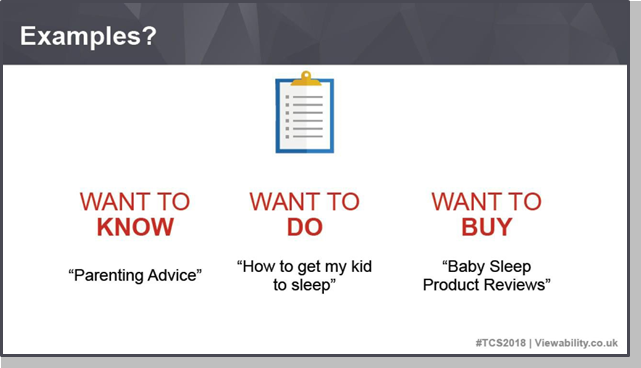
Write down 10 of each of those and ignore any keyword tools that are out there, because there’s a much better way of doing things.
Then, you grab one of those keywords that you find, and you’re gonna type it into YouTube. You might select something like, “how to get my kid to sleep.”
When you type it into YouTube, it’s gonna open up a page; obviously, the search results look just like this:
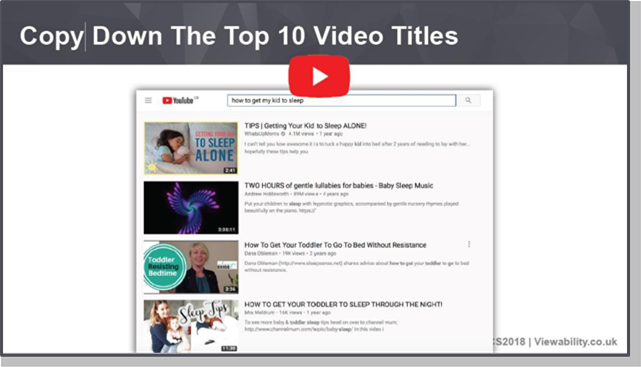
Now, you’ll notice that the first 4 videos that come up there don’t really resonate with the actual keyword you typed in. It says “tips: getting your kid to sleep alone,” then the second video down says “2 hours of gentle lullabies for babies.” Not one of the keywords that you typed in is actually giving you an answer that’s semantically correct or basically exactly what you typed in, and this is the second biggest search engine.
YouTube works in a completely different way. It’s better than videos, but not gonna be helpful if you just stick with normal Google-type keywords. So what you do is write down the first 10 videos that come up; that’s half the first page of the results on YouTube.
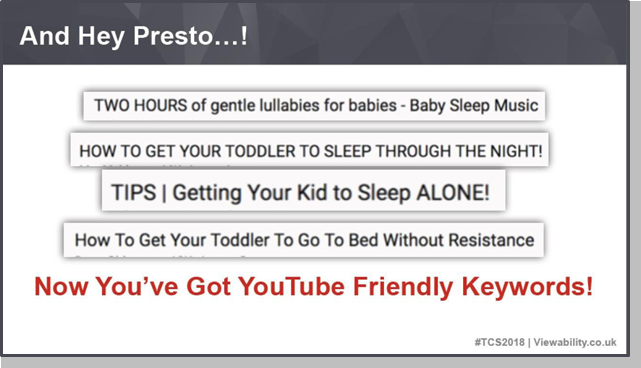
And those are going to be your YouTube-friendly keywords, and you might tweak them slightly to make sure it fills more of the phrase that you might type in, but those types of keywords work incredibly well.
If you build a keyword campaign for your YouTube ads with this sort of marketing and these types of keywords, you should do incredibly well. Here’s the steps again:
- You grab your 30 brainstorm keywords to begin with.
- Then you create 10 titles per keyword.
- Use those as your basis for your keyword campaign on YouTube.

But wait! There’s an app for that!
We’ve built a tool to make this process a little bit easier for you as well, to speed things up. You just type in how many titles you want at the very top of the tool.
Then you can type in your keyword here, and then underneath, it’s going to give you all the YouTube titles that are there, so you can copy and paste them and start working on them from that perspective. This makes things a lot quicker as opposed to copying and pasting inside of YouTube.
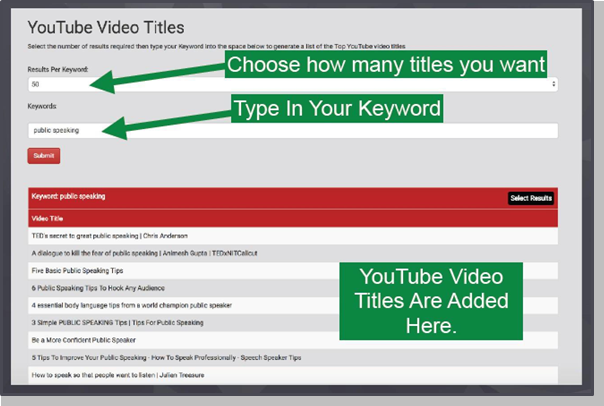
To get access to it, go to this URL: http://Viewability.co/TCS2018
If you need more convincing, and think, “Right, well, will this scale? Will this actually be good?” This is a screenshot of one of our clients that’s spending quite a bit on this one keyword campaign. This is the last seven days, and they’ve spent $27,000 very profitably. So, this is the keyword campaign:
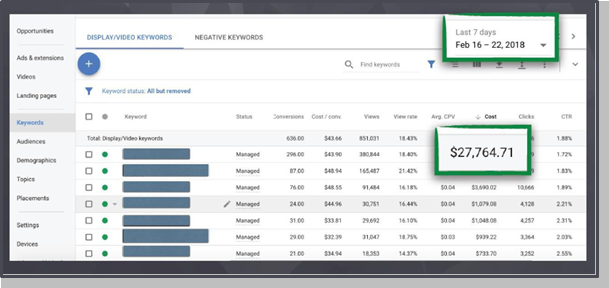
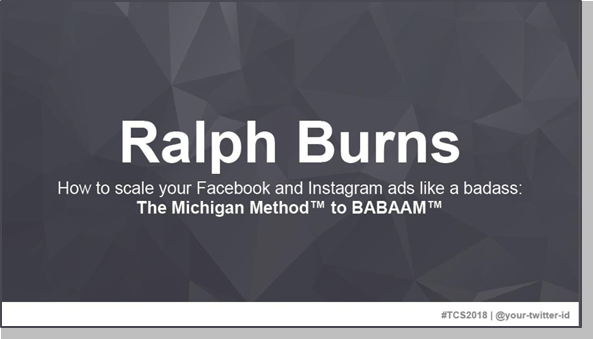
I’m going to teach you how to scale your Facebook and Instagram ads like a badass, using two techniques that we use in a TierEleven agency, which is Michigan Method, as well as this other thing we just discovered, recently, called BABAAM.
This case study is about a health and beauty customer of ours. Their main goal is 3x return on ad spend, and we were having some challenges getting to this goal for this particular customer.
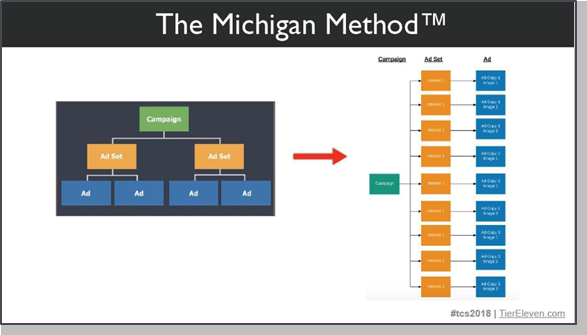
There are two different ways to go about this. On the left hand side, this is how Facebook actually tells you to build your campaigns to test. In fact, it really doesn’t work that way. There’s now something called dynamic-creative, which is an extremely effective way to test advertising.
But what we tend to do is we build our campaigns like the image on the right, which we refer to as the Michigan method. You don’t necessarily need to create this, because this is highly complicated, but even if you do something that’s somewhat similar to it, you can figure out very quickly what audiences, what targeting, what ad copy, what image, what creative works best on Facebook. The problem is, and I’ll get to that in a second, it doesn’t last forever.
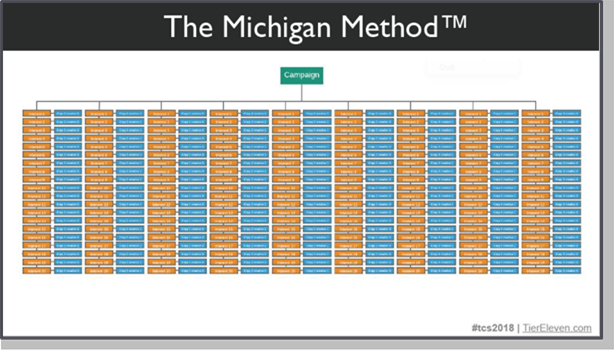
If you don’t know what the Michigan Method is, Episode 71 of the Perpetual Traffic podcast, goes way more into this. For the sake of this example, we really aren’t talking about the Michigan Method, but just what it does – it’s testing on steroids. Multi-varied testing, forcing the algorithm, forcing Facebook to show your ads to as many people, as many audiences, using as many different types of ads as you possibly can.

We typically do 10-15 audiences and 10-15 ad variations. You can do 2 or
- This is just what we do, but we’re a high-volume Facebook and Instagram advertising agency.
The thing that stops this is this right here, it’s that we wanna test at small budgets, so our budgets for the Michigan Method are typically two extra target CPA.
So, say, you wanted to get a $5 lead to a registration for a webinar. You might set your budget at $10/day. Best case scenario, you might get 20 conversions a week. This is great, because you can get initial data, but you’re going to have problems scaling it.
Potential reach typically is larger. It’s a million, or more, so that’s typically the way that Facebook algorithm works best. One ad in each ad set.
A lot of testing here is done in a very short period of time, you can see how complicated this can possibly get for you if you do it at scale. You can have upwards of 200 ad sets all at once.
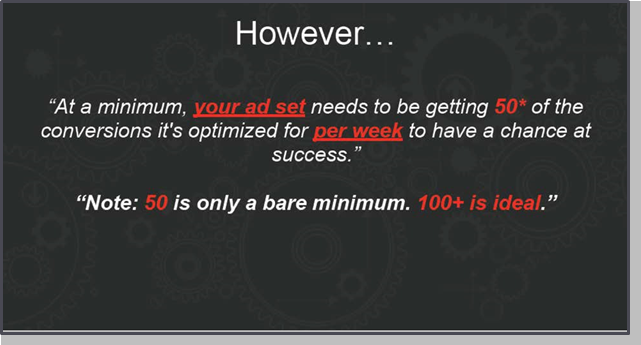
So, Facebook tells you that you should get about 50 conversions per week, per ad set, ideally. The Michigan Method typically doesn’t allow you to get to that 50 point. So, we run into issues with deliverability, as well as CPA, because, in essence, we’re killing the goose that lays the golden egg. We’re not leveraging the Facebook algorithm to its fullest extent.
This is what the Michigan method does in essence: it creates all those different ad sets that don’t talk to each other, but they don’t get the requisite 50 at the end of the week.
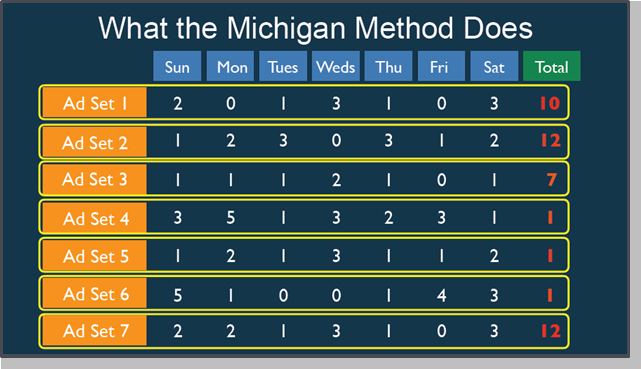
Seven days, and you need 50 conversions.
What the algorithm really wants, however, is that they want lots of conversions, lots of things feeding that algorithm, that artificial intelligence, so that you can get your ads in front of the right people.
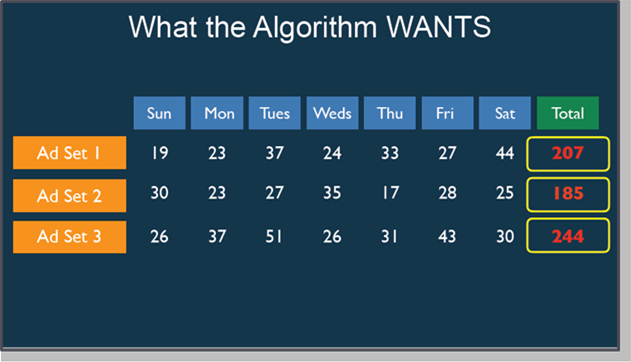
PROBLEM: There was another problem, though. When we would test like this with all of these audiences; they start to fight each other. There’s lots of in-fighting going on here. So, we’re having issues with deliverability as well as cost per acquisition starts to increase.
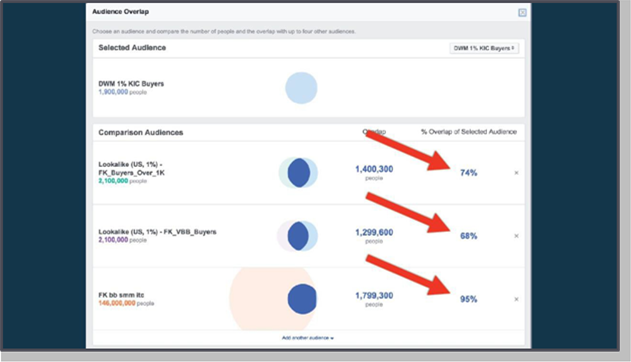
The point is that there’s audience overlap that’s happening with all those different audiences, and all those different ads are now competing against each other. You’re not leveraging the algorithm now; you’re cannibalizing your own ads.
So what we decided is that we should actually create another strategy which we referred to as BABAAM.
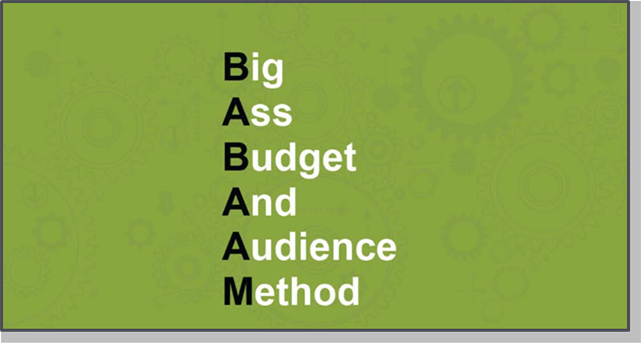
I wouldn’t recommend starting this way, but it’s a step two after you do your testing with the Michigan method.
BABAAM is a 6-step process:
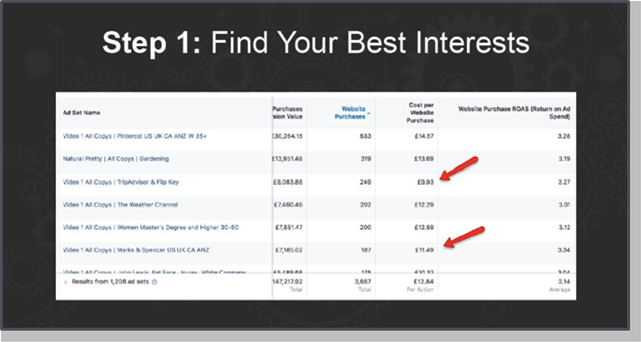
It might be the Ryan Deiss, the Tom Breeze, the Mike Rhodes, Sue Zimmerman interest, your best interest that you’ve tested the Michigan method.
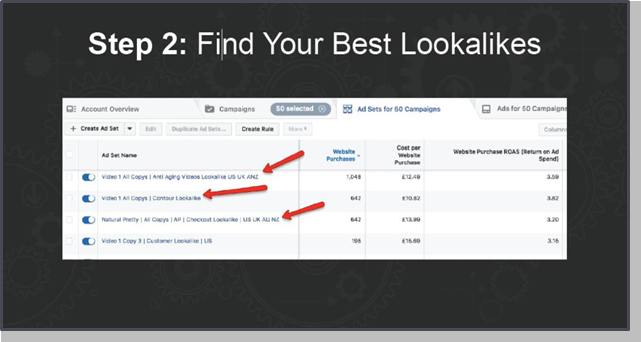
Then you find your best lookalike audiences. It might be the most logical lookalike audiences for your website, custom audience, maybe a purchased lookalike audience, something like that.
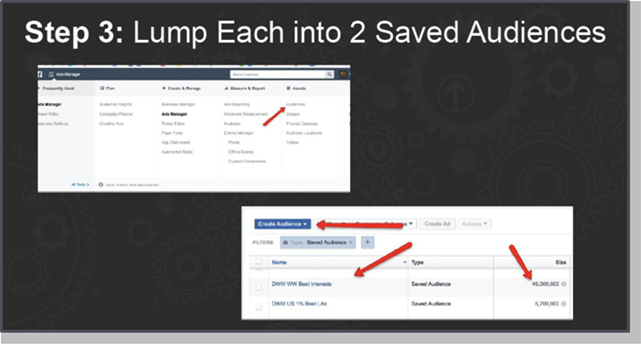
You group them together now. You’re taking this overly complicated testing methodology, and you’re putting them into two different audiences using saved audiences. Right under the audiences function, inside ads manager.
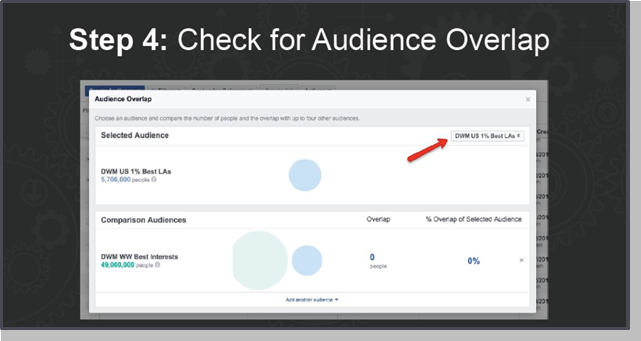
Then you check for overlap. It’s another dropdown that you can do, right inside audiences, to see how much overlap you’re actually getting. This one is zero overlap, which is ideal.
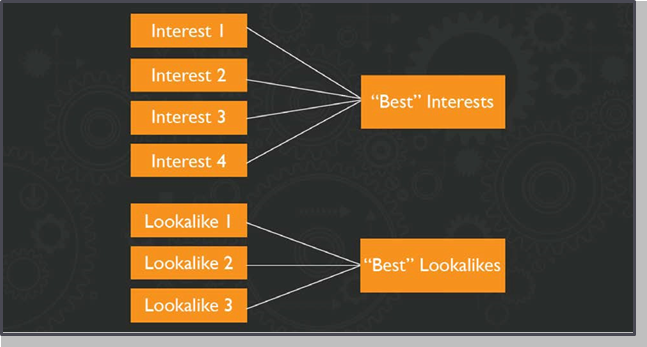
So, here’s what you’re doing: you’re taking your best interest, which you’ve got a lot of intelligence on for your initial testing. You’re aggregating it into two assets now; one for best interest, one for best lookalikes.
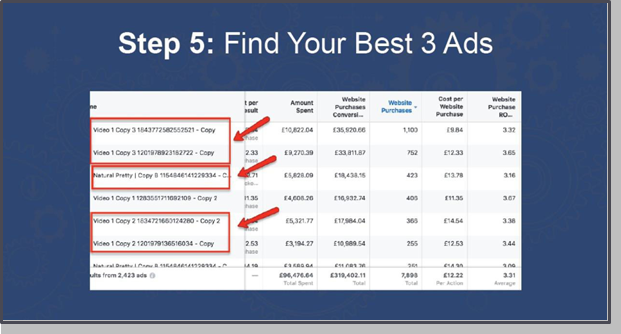
Then, you find your best three ads. You’ve done all this testing, figured out which one is the lowest CPA, highest return on ad spend. They can be in any variety of all your different types of campaigns. Pull those three out; maybe three to six, at the max.
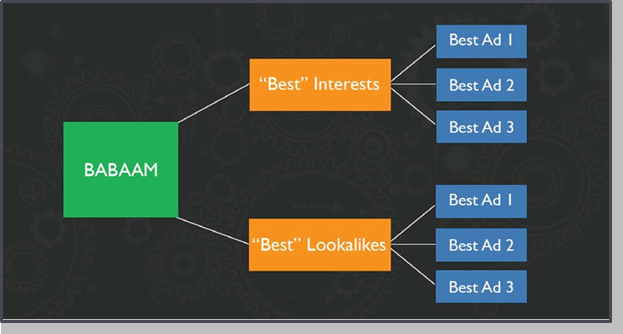
So, here’s what we’re looking at: we’re looking at best interest, best lookalikes, and 3 best ads. Now all of a sudden, your campaign looks a whole lot simpler than the Michigan method.
The Michigan method is complicated, yes, and this is far simpler. You can’t start this way typically. You need to have some sort of intelligence.
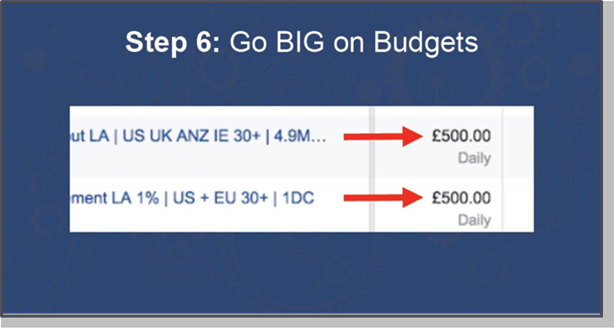
The last step in the process is to go big on budgets. As opposed to two conversions a day, you want to get at least seven to ten conversions a day, if not more. Set those budgets large; these are 500 pounds each, and these are the results that we got for this customer. Using this example method, you can see it’s 1.1 million pounds, 4.9 million pounds, which I believe is like 2 trillion dollars.
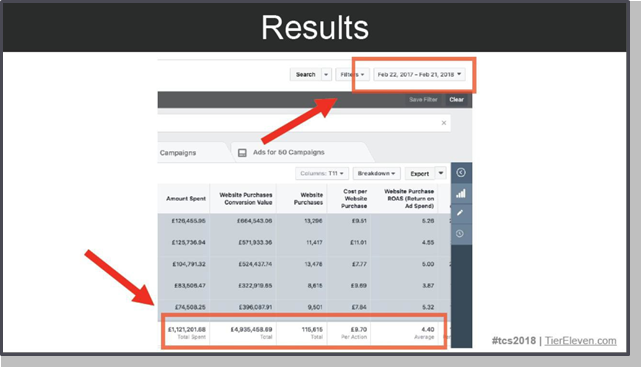
So, with a 4.4 return on ad spend. These are real results that we got using this exact method.
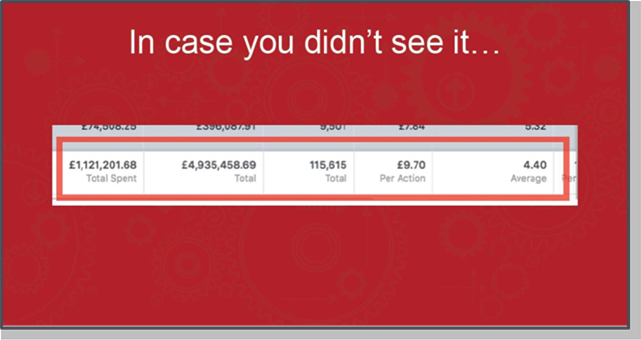
So, definitely try it out on your own campaigns, especially if you’re starting to get impressions and your cost per acquisition is starting to increase.
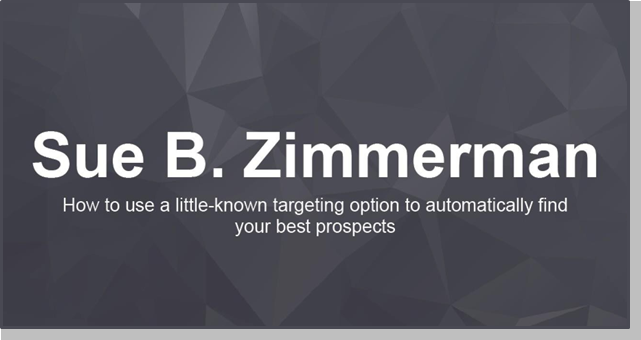
I teach Instagram marketing and I’ve been teaching it for five years. There are so many great things you can be doing. Alright, so most of you are here for business.
I want you to understand that there’s so much more to Instagram than just the pretty feed, and just posting photos. It’s really to take the content that you published that lives on your website, and using Instagram as a social media tool will drive traffic to your website

Lorem ipsum dolor sit amet, consectetur adipiscing elit. Ut elit tellus, luctus nec ullamcorper mattis, pulvinar dapibus leo.

Lorem ipsum dolor sit amet, consectetur adipiscing elit. Ut elit tellus, luctus nec ullamcorper mattis, pulvinar dapibus leo.

Lorem ipsum dolor sit amet, consectetur adipiscing elit. Ut elit tellus, luctus nec ullamcorper mattis, pulvinar dapibus leo.

Lorem ipsum dolor sit amet, consectetur adipiscing elit. Ut elit tellus, luctus nec ullamcorper mattis, pulvinar dapibus leo.

Lorem ipsum dolor sit amet, consectetur adipiscing elit. Ut elit tellus, luctus nec ullamcorper mattis, pulvinar dapibus leo.

Lorem ipsum dolor sit amet, consectetur adipiscing elit. Ut elit tellus, luctus nec ullamcorper mattis, pulvinar dapibus leo.

Lorem ipsum dolor sit amet, consectetur adipiscing elit. Ut elit tellus, luctus nec ullamcorper mattis, pulvinar dapibus leo.

Lorem ipsum dolor sit amet, consectetur adipiscing elit. Ut elit tellus, luctus nec ullamcorper mattis, pulvinar dapibus leo.

Lorem ipsum dolor sit amet, consectetur adipiscing elit. Ut elit tellus, luctus nec ullamcorper mattis, pulvinar dapibus leo.

Lorem ipsum dolor sit amet, consectetur adipiscing elit. Ut elit tellus, luctus nec ullamcorper mattis, pulvinar dapibus leo.

Lorem ipsum dolor sit amet, consectetur adipiscing elit. Ut elit tellus, luctus nec ullamcorper mattis, pulvinar dapibus leo.

Lorem ipsum dolor sit amet, consectetur adipiscing elit. Ut elit tellus, luctus nec ullamcorper mattis, pulvinar dapibus leo.

Lorem ipsum dolor sit amet, consectetur adipiscing elit. Ut elit tellus, luctus nec ullamcorper mattis, pulvinar dapibus leo.

Lorem ipsum dolor sit amet, consectetur adipiscing elit. Ut elit tellus, luctus nec ullamcorper mattis, pulvinar dapibus leo.

Lorem ipsum dolor sit amet, consectetur adipiscing elit. Ut elit tellus, luctus nec ullamcorper mattis, pulvinar dapibus leo.

Lorem ipsum dolor sit amet, consectetur adipiscing elit. Ut elit tellus, luctus nec ullamcorper mattis, pulvinar dapibus leo.

Lorem ipsum dolor sit amet, consectetur adipiscing elit. Ut elit tellus, luctus nec ullamcorper mattis, pulvinar dapibus leo.

Lorem ipsum dolor sit amet, consectetur adipiscing elit. Ut elit tellus, luctus nec ullamcorper mattis, pulvinar dapibus leo.

Lorem ipsum dolor sit amet, consectetur adipiscing elit. Ut elit tellus, luctus nec ullamcorper mattis, pulvinar dapibus leo.
